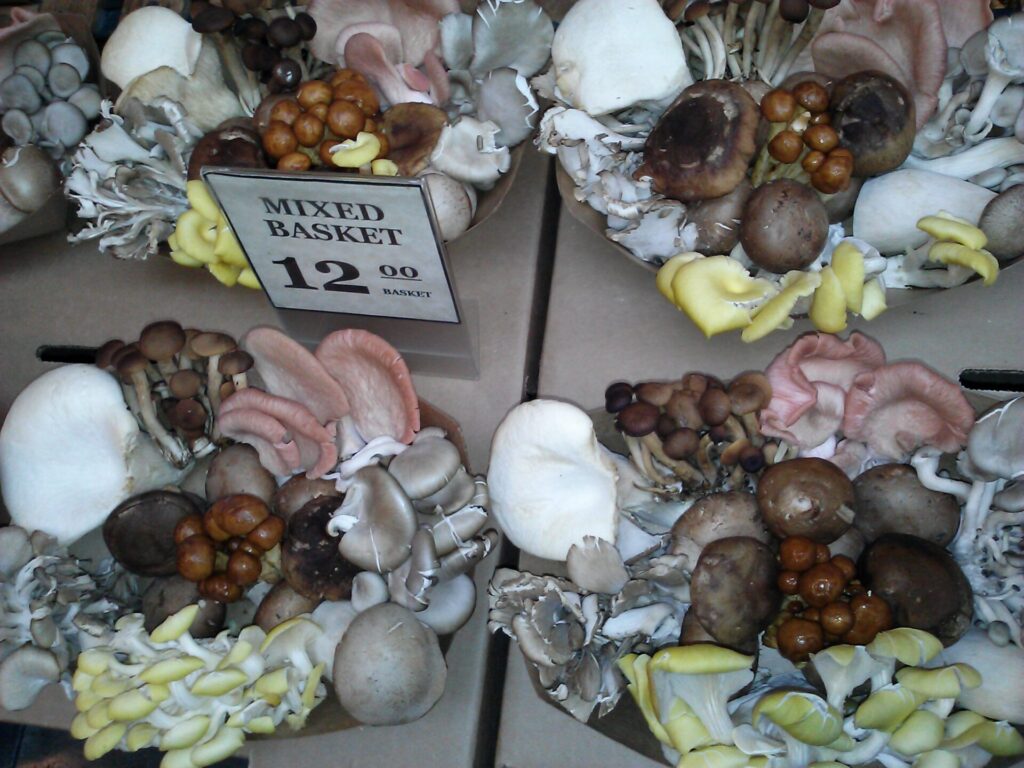Plants that lacks chlorophyll and get its nutrients from organic matter like trees, leaves,
dead wood, and waste. “They are nature’s decomposers, organisms that recycle all the dead animals
and plants that accumulate during the course of a normal life and death cycle. Without mushrooms,
and other fungi, the earth would be awash in plant and animal debris. Our soils would not be
replenished with fresh humus and our forests would be piled high with leaves, branches, and fallen
logs,” from Reishi Mushrooms by Terry Willard.
Examples of produce part of stores are Cepe, Chanterelle, Button, Morel, Porcini. Medicinal orientals
are Enoki, Oyster, Reishi, Shiitake, Tree ear.
Most hobbyists start out with Oyster, the easiest type to grow, but once you learn the tools of the trade
you can try your hand at dozens of species






